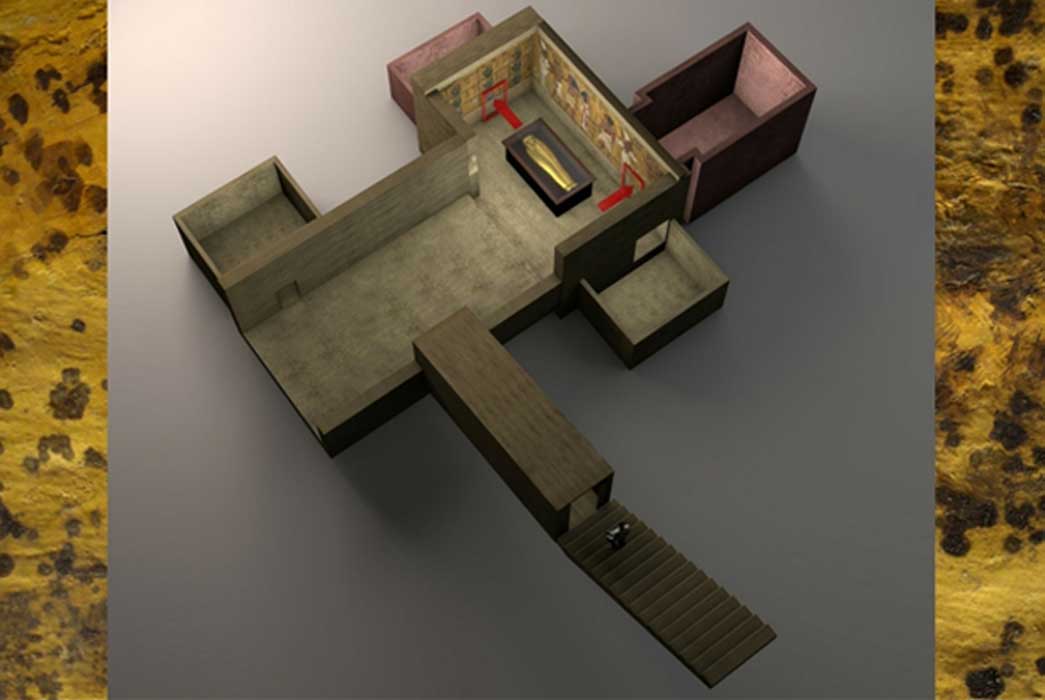
Final Pieces of the Jigsaw: Are Khufu, Nefertiti & Ankhesenamun Set to Yield Their Secrets?
Subsequently, the Ministry of Antiquities enlisted the services of the renowned Japanese radar specialist Hirokatsu Watanabe and initiated radar scans and infrared thermography tests to ascertain if this theory had any merit.
Soon thereafter, while these studies were underway, the ScanPyramids Mission—established under the authority of the Egyptian Ministry of Antiquities, and led by the Faculty of Engineering, Cairo University and the Paris-based nonprofit organization Heritage, Innovation and Preservation (HIP Institute)—was launched in October 2015. State-of-the-art 3D laser scans and muon radiography imaging were employed to study the possible existence of voids or cavities which scientists hoped would lead to a hitherto undiscovered chamber in the enigmatic Great Pyramid. Interestingly, thermal scans had earlier suggested a major anomaly in Khufu's Pyramid.
Needless to say, all of this promoted exceptional levels of excitement and eager anticipation. However, in the months that followed, conflicting and inconclusive results were declared post more scans—including by National Geographic radar technicians—in KV62, leading to much debate and massive disappointment globally. All this came close on the heels of the then Minister of Antiquities, Mamdouh el-Damaty’s ecstatic statement, "... it’s 90 percent likely there is something behind the walls".
But by May 2016, it was amply evident that the possibility of finding hidden chambers in Tutankhamun's tomb was almost out of the question. The reason: the aforementioned radar scans of the burial chamber delivered contradictory conclusions. The investigations in KV62 seemed to have reached a cul-de-sac—until a team of Italian specialists, from the Politecnico University in Turin, Italy, conducted a third round of radar scans earlier this year; the results of which have not been revealed. Add to this the fact that fresh news has not been forthcoming about the ScanPyramids Mission either, and the palpable sense of disillusionment among the public is obvious.
- The Hunt for Ankhesenamun: How Did a Young Woman Stop an Ancient Dynasty from Imploding? Part I
- The Hunt for Ankhesenamun: A Murderess, Vixen or Helpless Child in this Ancient Egyptian Soap Opera? Part II
- Was the Heretic Pharaoh Akhenaton in Fact the Father of Modern Monotheism?
On July 7, 2017, National Geographic Italia published an interview about the discovery of a new tomb in the western annex of the Valley of the Kings. The report claimed that based on the four foundation deposits containing votive objects such as pottery vessels, food remains, and tools, archaeologists suspected that it was the site of a tomb construction. Thus far, only a handful of foundation deposits have been discovered in the Valley of the Kings; and a minuscule percentage have been retrieved intact. The article also revealed that ground-penetrating radar tests detected “a substructure that could be the entrance of a tomb”. Apparently located near the burial of King Aye (WV23), this mysterious construction was identified outright as Ankhesenamun’s sepulcher.
While sections of the mainstream media went into overdrive with the story, official confirmation from the Ministry of Antiquities wasn’t forthcoming. The deafening silence fueled unprecedented rumor-mongering and wild speculation. However, in an update to Live Science, Former Minister of State for Antiquities, Dr Zahi Hawass, who heads this project explained that until excavations get underway it cannot be assumed that a tomb has been discovered, for there may not be one at all.
Recently, Egyptian Minister of Antiquities, Dr Khaled El-Anany made a cryptic announcement stating that he is privy to news of a spectacular archeological discovery “that will astonish the whole world”. While we wonder what the latest pronouncement could possibly hint at (with words that are pregnant with the hope for a resurgence in Egyptology), enthusiasts and scholars alike fervently wish that the final resting places of the Great Royal Wife of Akhenaten, the mesmeric beauty, Nefertiti; Tutankhamun's consort and the last Sun Queen, Ankhesenamun; and the secret chamber in the Great Pyramid will all come to light without further ado. Nothing less than such a spectacular bouquet of archeological discoveries will qualify as "astonishing".
“News from the Valley is Very Promising!”
In a free-wheeling, exclusive interview with Anand Balaji, well-known writer and history researcher Owen Jarus provides Ancient Origins Premium with updates from ground zero on the latest Egyptological developments.

(Top left) Detail of the world’s most famous painted stucco-coated limestone bust. Queen Nefertiti, the ‘Great Royal Wife’ of Akhenaten was one of the most powerful women in her time. Egyptian Museum, Berlin. (Right) If foundation deposits and radar scans are right, a new royal tomb could soon be uncovered in the Western Valley. (Bottom left) The Great Pyramid, built by the fourth dynasty Pharaoh Khufu towers over the Giza plateau. (Photos: Artistically/Public Domain, Brian Alm & Mstyslav Chernov/CC BY-SA 3.0)




